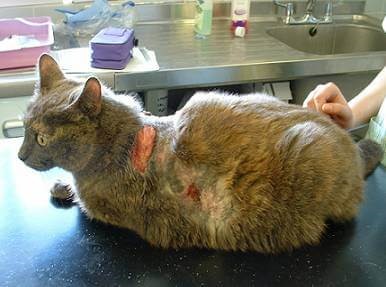
Feline hyperadrenocorticism (HAC) is a rare condition in cats. Spontaneous HAC is associated with increased production of endogenous steroid hormone (cortisol) by the adrenal cortex. 75-80% of cases are pituitary dependent (functional pituitary adenoma) and 25% are caused by an adrenal tumor (carcinoma or microadenoma). Feline HAC may also be iatrogenic from exogenous use of steroids such as prednisolone.
Signs
Clinical signs may include polyuria, polydipsia, and polyphagia, depression, lethargy, anorexia, weight loss, muscle weakness, hepatomegaly, pendulous abdomen, vomiting and diarrhea. They may have concurrent diabetes mellitus and the diabetes may be insulin resistant due to the impact of cortisol. Skin lesions may include a poor unkempt hair coat, scaling, alopecia, hyperpigmentation, thin and fragile skin that bruises or tears easily, comedones, abscesses and curling of the tips of ears.
Diagnosis and Treatment
The diagnosis is made based upon clinical signs, history, and evaluation of laboratory work, skin biopsy, abdominal ultrasound and adrenal function tests. A CT Scan or MRI may be recommended to evaluate the pituitary gland for a pituitary mass. Treatment options may include lysodren, trilostane, surgery, or radiation of the pituitary gland.
If your pet is showing any signs, contact your veterinarian and ask if a referral to a MedVet dermatology specialist is right for you.

